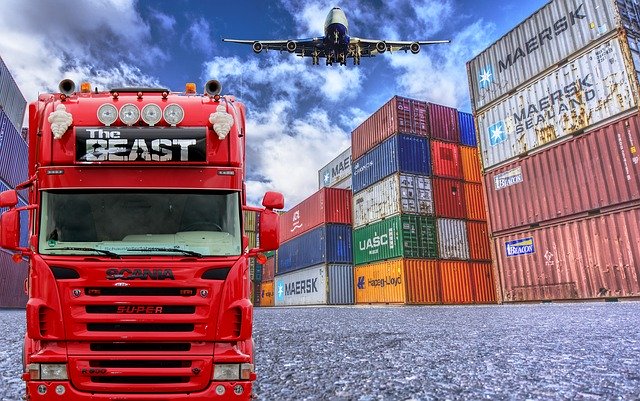 The current COVID-19 outbreak has caused disruption through all sectors of the supply chain, with industries such as auto, travel, consumer goods, electronics and retail profoundly impacted, according to EY, a global assurance, tax, transaction and advisory service provider.
The current COVID-19 outbreak has caused disruption through all sectors of the supply chain, with industries such as auto, travel, consumer goods, electronics and retail profoundly impacted, according to EY, a global assurance, tax, transaction and advisory service provider.
In a recent blog, Rodrigo Cambiaghi, EY Asia-Pacific and Greater China Supply Chain and Operations Leader, urged companies currently not set up to withstand a major unpredictable event, such as the current coronavirus outbreak, to build a resilient supply chain in preparation for future disruptive instances.
Accelerated recovery from disruption
Cambiaghi shared some insights and instances of how companies can support “an accelerated recovery journey from the impact of disruptive events.”
He mentioned a leading car manufacturer that had to shut down seven of its factories in Korea due to the inability of its qualified vendors, which happened to be located within Hubei province in China, to deliver components to produce wire harnesses for their vehicles.
“Immediate impact of this issue has affected 40% of this global car manufacturer’s total network output, dictating the pause of a new model launch. While this carmaker is currently looking for alternate vendors for these critical components, the lead time may not be so quick. Vendor qualification to comply with ISO/TS 16949 quality management requirements may prevent the reopening of these factories in Korea in the near term,” the blog said.
Cambiaghi said possessing multiple qualified sub-tier vendors and alternative sources in diversified locations would not have eliminated all risks but would have allowed some capacity to be utilized.
Procurement professionals should look to assess category strategies that balance cost and risk, starting from new product model/platform planning to day-to-day procurement operations, leveraging technology to support rapid response, he further advised.
Meanwhile, a global active apparels company with both offline and online omni-channel business models found its offline business significantly affected by the coronavirus, as over 50% of the direct stores closed.
The company plans to boost online business through agile internal collaboration for ad-hoc marketing events and enabling a seamless connection between online and offline inventory to mitigate the loss of its offline business. In addition, a focus on logistics strategy including diversifying its logistics network and last-mile partners has helped it navigate this crisis.
In value chain planning, traditional demand forecasting that relies on past sales history can be a poor predictor of future sales considering real-world events such as abrupt market shifts, weather changes or natural disasters.
Cambiaghi said one global beverage company has adopted Internet of Things (IoT) and visual recognition technology to sense demand in coolers installed in convenience stores, restaurants, and supermarkets.
“With such technology in place, the company can increase visibility of channel inventory and better respond to an event like the coronavirus outbreak even if distributors cannot provide current state forecast,” he said.
For manufacturers, meanwhile, labor shortage and replenishment are the focal points as factories ramp up production after temporary shutdowns. The travel restrictions and health impact from the coronavirus have led to the reduction of available migrant workers who could return to work. Even after the reopening of factories, most sites are expected to still struggle to achieve 50% of their previous capacity.
“Focusing on management of spare parts availability will be critical as it is likely the company will forego maintenance strategies for more production time to catch up demand. A major breakdown coupled with unavailability of replacement parts may cause a similar impact as a full factory shutdown. Company EHS [environment, health and safety] programs will also have to be re-evaluated for effectiveness against a disruption such as a pandemic outbreak,” said Cambiaghi.
Tips to boost resilience
He also gives these tips to help companies build a resilient supply chain:
- Conduct end-to-end supply chain risk assessments and prioritize critical focus areas.
In the short term, responsiveness and speed are everything. Proactively engage supply chain ecosystem partners, such as suppliers and logistics service providers, to conduct a risk health check.
- Develop a robust risk management process and diversify supplier network.
Enterprises should map out supply chain networks from end consumers to tier-N suppliers. For each supply chain node/arc-like channel, warehouse, factory, supplier, or transportation mode, firms should establish a methodology to measure risk.
- Implement digital and automated manufacturing capabilities paired with strong manufacturing excellence.
Leverage automation and IoT solutions for smart manufacturing operations to mitigate reliance on labor intensive processes.
- Evaluate and adjust procurement category strategic priorities.
Transform procurement into a value-generation function via timely reviews and adjust category strategic priorities to define new business relationships with suppliers to meet the company’s overall supply chain objectives.
- Invest in more collaborative and agile planning and fulfillment capabilities.
“The art-of-possible today in technologies that can bring more agility and collaboration within the enterprise as well as across business partners are endless,” said Cambiaghi. These include IoT devices that provide demand sensing and goods movement tracking and advanced forecasting solutions and behavior monitoring.
“These capabilities are extremely important for business performance even in normal business conditions and they increase the supply chain resilience in pandemic events like the coronavirus outbreak we are living today,” he stressed.





